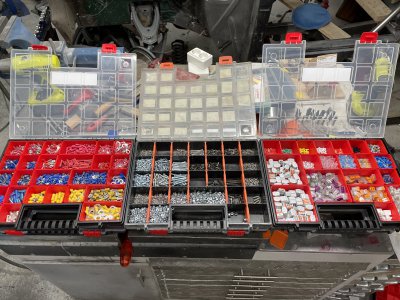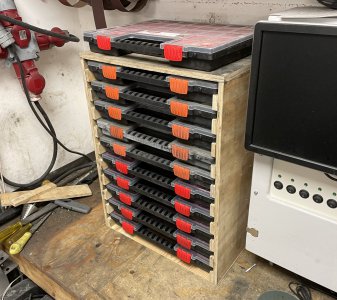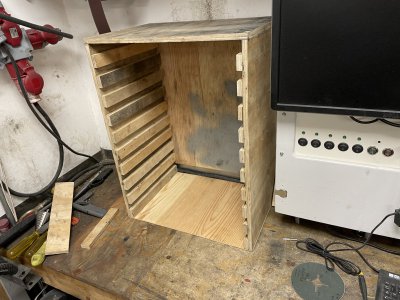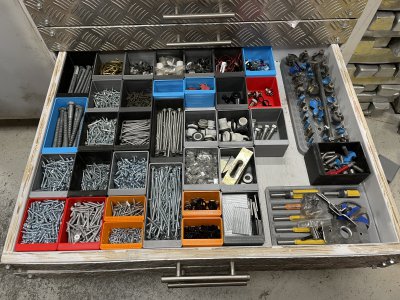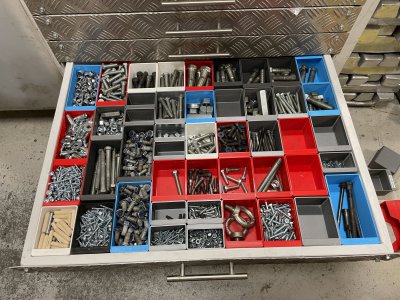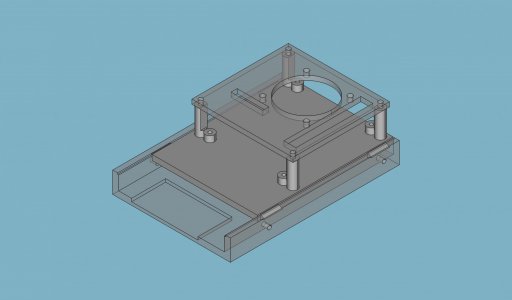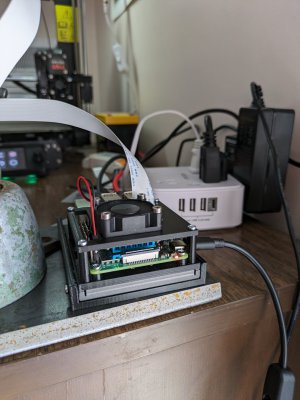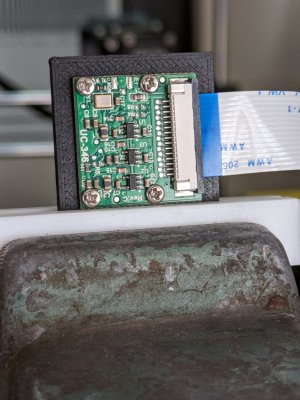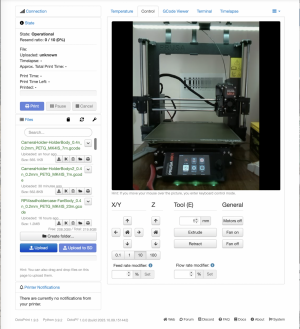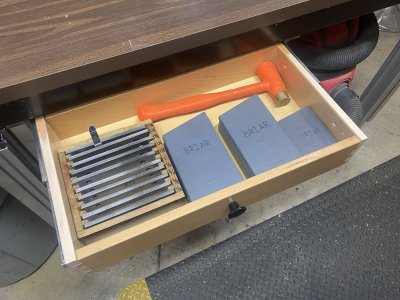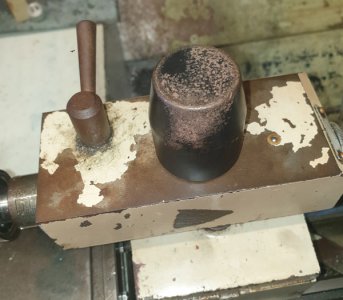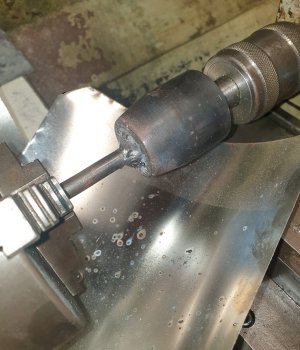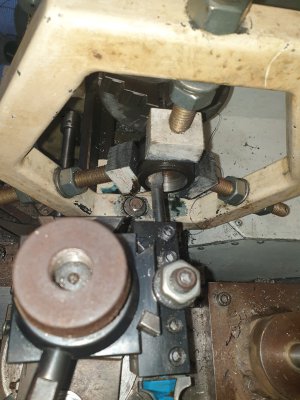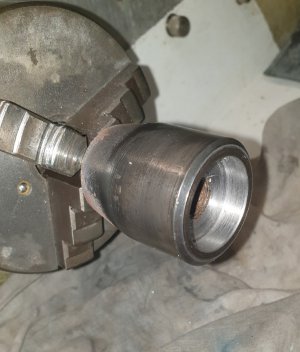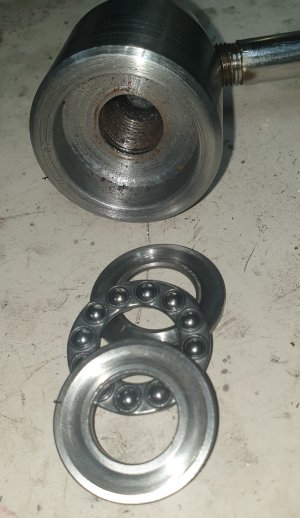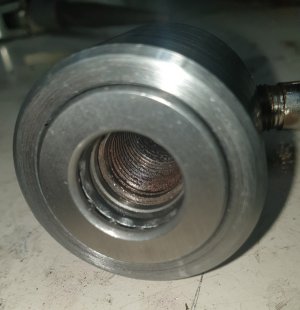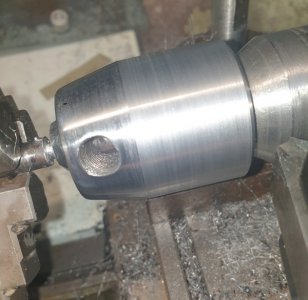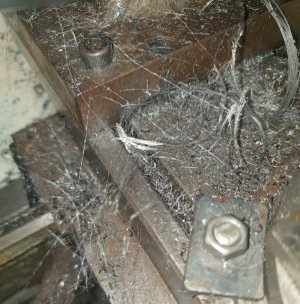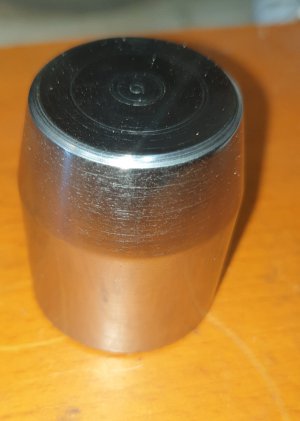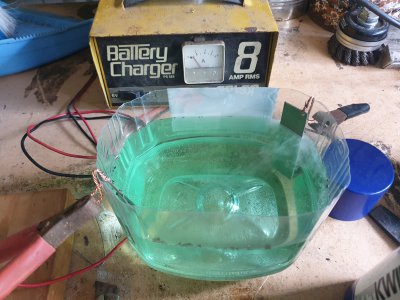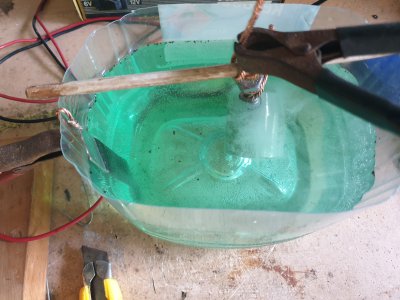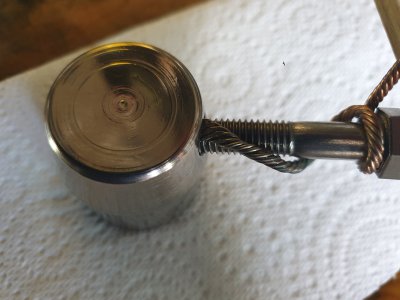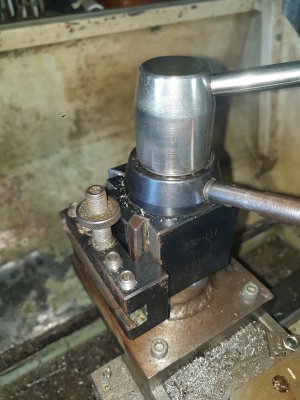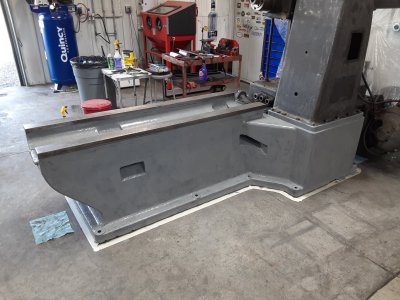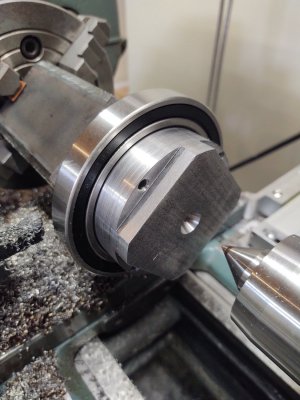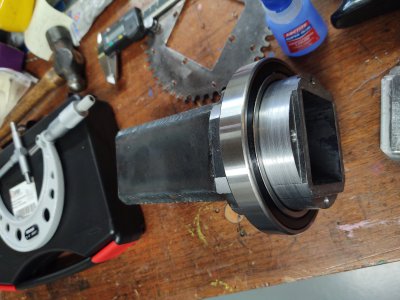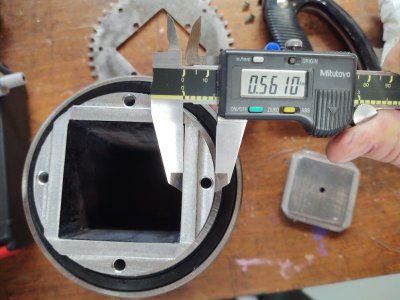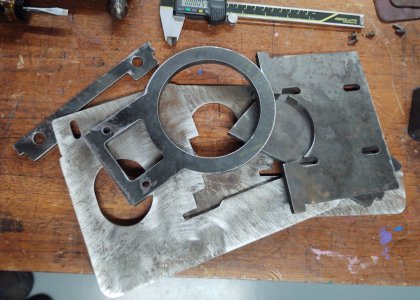Nothing complex today—faced off a cast iron 11” fixture plate for the lathe to true it up. It had a .007” wobble, but now it’s within a tenth.
Rick “pic to come” Denney
The fixture plate is 10”, not 11”, and was clearly made for my lathe with the threaded hub cast in and fitting the strange 2-1/4x6 spindle threads. It’s a good 3/4” thick and perfect for things that need to bolted flat for facing or trepanning.
I first tried to face it with a Chinese CNMG432 turned to the obtuse corner in a tool holder design for facing. But I was not happy with the finish I was getting. Then, I tried a beefy HSS tool with a turning grind, and the facing operation polished it down within a quarter inch.
This surprised me. I tried a more pointed tool and same thing. The chips were coming off like cast iron, but even the face must have had a really hard layer.
That’s when I switched to a Mitsubishi CNMG432 insert if type VP10RT. It’s bit sharper and I thought maybe it would take off 0.010 without chewing up the surface. I used it in a standard turning holder.
And that did the trick. Speed was 250 rpm, feed was slow to get a smooth finish at about 0.003 per rev. The 0.010 depth of cut (at worst—0.004 at best) just skimmed it.
Finish is excellent:
And runout is now about 0.0002–probably about the limit of my old lathe. And that has been repeatable in several remove/replace cycles.
Rick “has some expensive CBN inserts in reserve—didn’t need them” Denney


